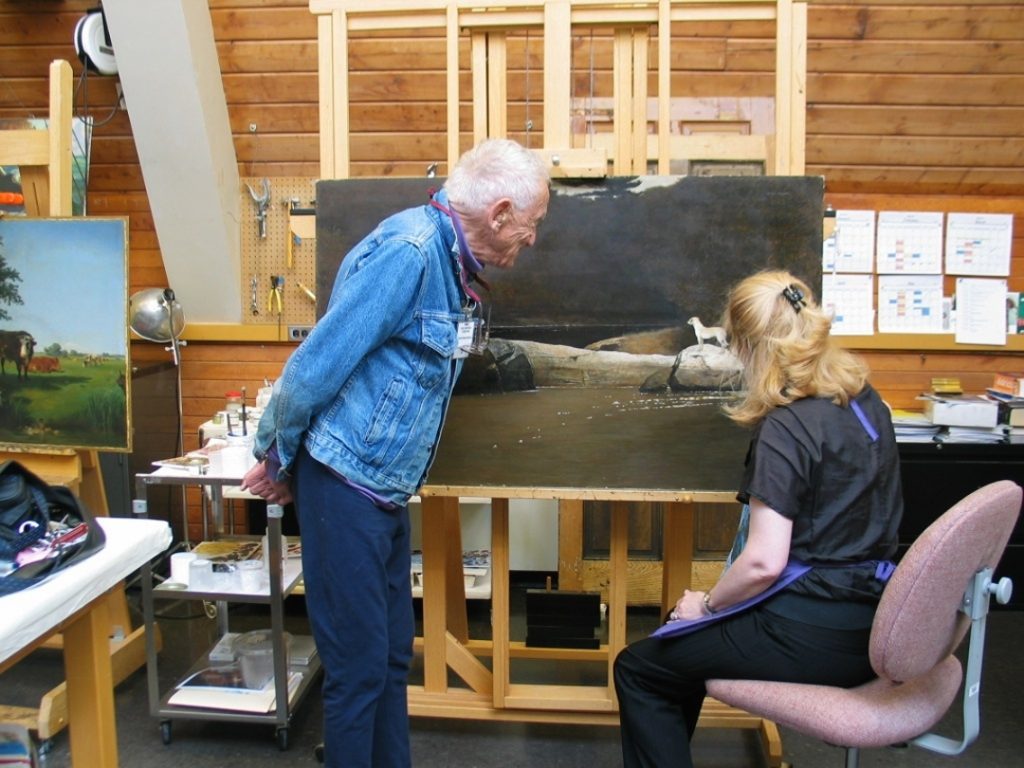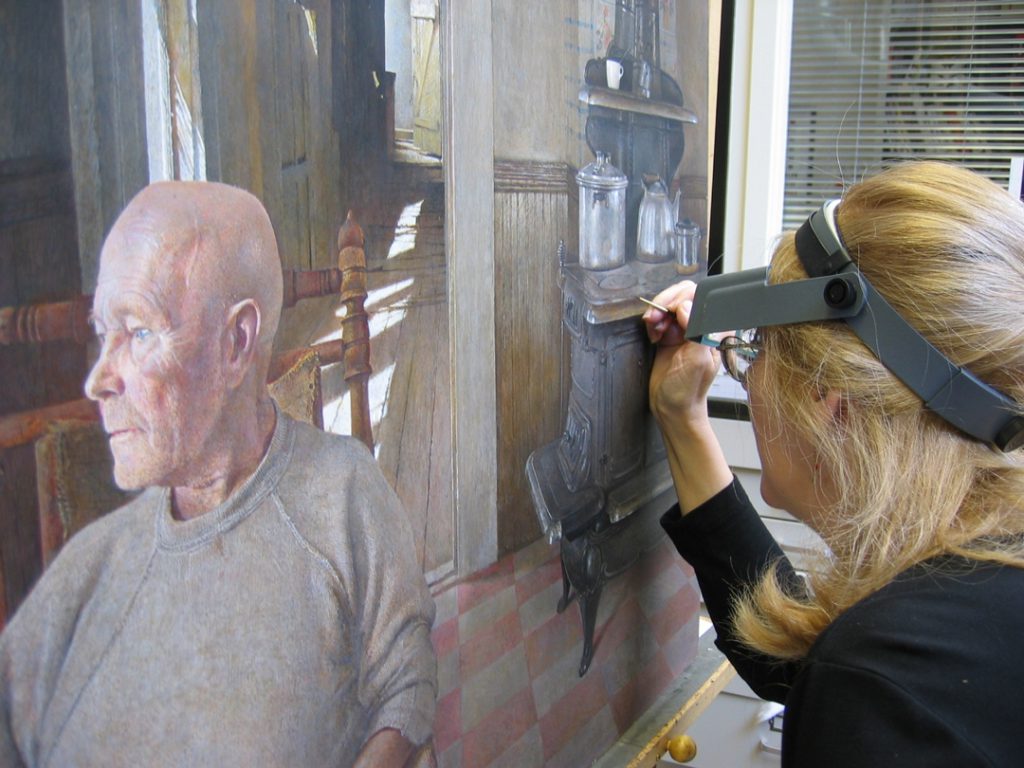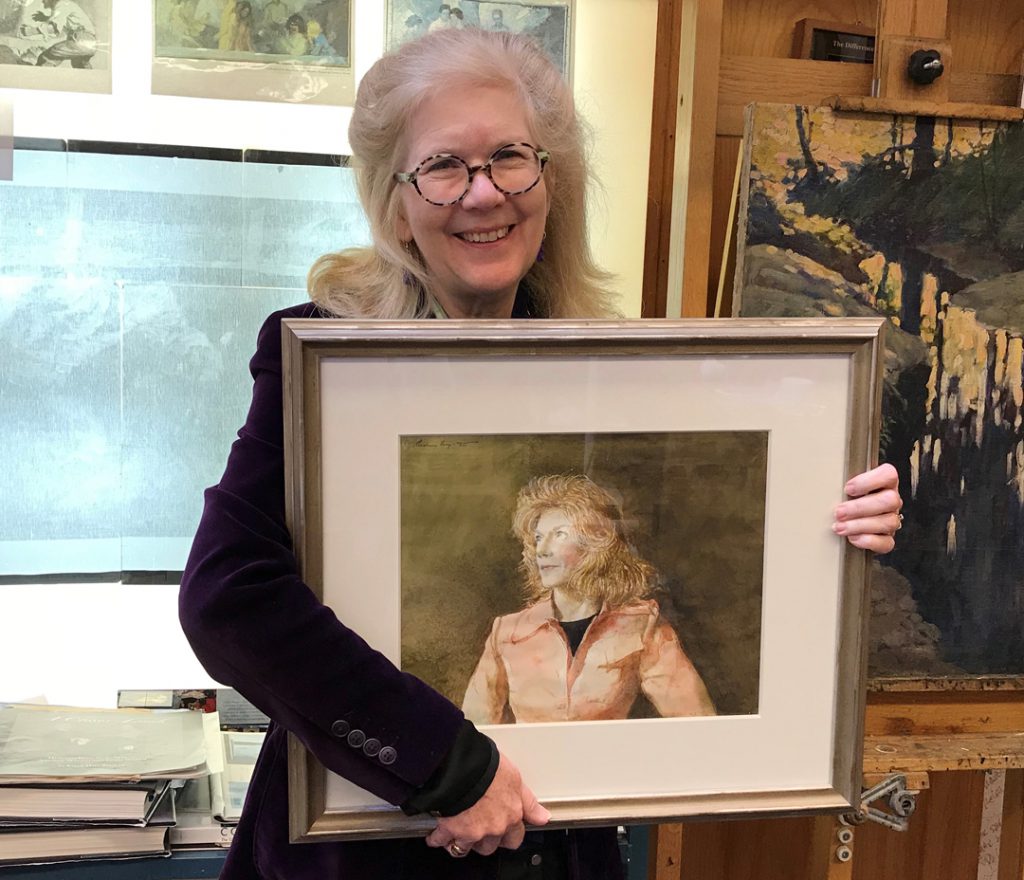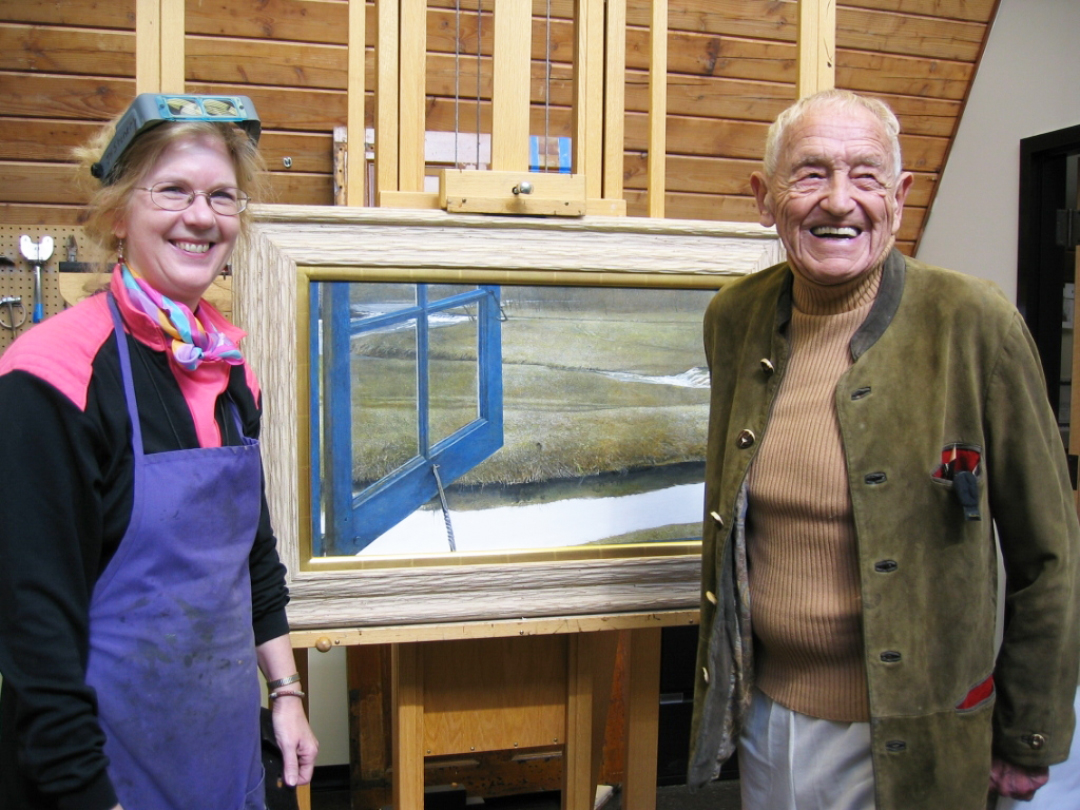Conserving and Conversing: Andrew Wyeth
I had the amazing privilege of serving as Andrew Wyeth’s conservator for the last 12 years of his life. Conservators dream about being able to speak with the artists and ask them questions while making decisions about treating their works. (When I worked as senior conservator for the treatment of Whistler’s Peacock Room 1988–1992, we joked about how wonderful it would be to be able to have a séance in order to ask Whistler questions such as “just how shiny do you want the final varnish to be?”) And there Andrew Wyeth would be, live and in person, visiting my paintings conservation studio at Winterthur just about once a month, when I was treating one of his works or works by artists he especially admired, including Howard Pyle and N. C. Wyeth.
He would sometimes give instructions that I might not have intuited without him present: “inpaint this scratch (from handling) but don’t inpaint this other scratch; it makes the stone wall look older and rougher.” The egg medium in his tempera paint sometimes produces a white efflorescence that looks a bit like spray Christmas snow. He would ask me to LEAVE this white powdery substance on areas of snow in his winter landscapes, but to remove it where it took away the “snap” of the brown or black tree trunks. If a part of a gessoed panel had gotten wet and a few areas had flaked away, we would work out together how to inpaint the missing areas after I carried out consolidation and filling; twice we did this jointly.

Additionally I would be invited to cocktails at the Mill with Betsy and Andrew Wyeth; I typed extensive notes each night when I got back to my computer and have about two linear feet of notebooks detailing conversation topics, comments they’d make, and challenging questions they would ask all visitors; cocktails beside the Wyeths’ fireplace was never relaxing. (The pointy fireplace tongs, etc. give you a hint.) Often Andrew Wyeth would be “unveiling” a new tempera and the only faux pas would be NOT to have a lot to say—what does this remind you of? “Princess Diana in the tunnel where she died?” (That was Sparks.) While looking at a new tempera you had to produce a stream-of-consciousness monologue featuring your personal reactions and meaningful associations. Or you might hear Andrew in front of The Carry: “THIS calm area of water represents me doing temperas, but THIS turbulent water represents my ‘wild side’—doing watercolors.” For the same painting, Betsy said, “THIS turbulent water is me during the Helga crisis, but this calm area is after I got over the Helga crisis!” Andrew then said, “DID YOU get over the Helga crisis?” Dead silence in the room. I gave a cheery hostess-type laugh and changed the subject quickly to help retrieve equanimity.
On one occasion when we were walking into the Winterthur Research Building together to look at a treatment in progress, he patted my hair and said, “I like your hair, can I paint you?” (Richard Meryman, Wyeth’s biographer, had told me that he had always regretted saying he was too busy to pose when he was asked.) So I answered immediately: “Send up a flare and I’ll be there!” Wyeth looked puzzled, so I said “Absolutely!” He said, “I’ll call you” and asked what time I came in to work each day, and I said “8:15.” (I regretted this instantly because I don’t usually come in that early, but now I had to.)

Almost a month went by of sitting by the phone each morning. I’d come up with excuses to drive paintings up Route 100 to consult him. Then on one visit to the Mill, Andy and Betsy told me that Anna Kuerner had just died, and the Kuerner family had given Anna’s pink raincoat to Betsy. It didn’t fit Betsy so she asked me to try it on. It fit perfectly, so Andrew took my hand and said, “come on!” He led me into the Granary building, adjacent to the Mill, and began drawing me. This was May 1999. After a few hours he showed me a beautiful drawing and then said “now I’ll turn it into a watercolor.” I almost involuntarily shouted ”NO” because the drawing was so elegant, and my first thought was not to hide it with paint.
Luckily he ignored me, opened his large metal tool box full of tubed watercolors and began painting. He had me posed looking away, out of a window, which was disappointing for me as a conservator—I wanted to watch him paint. I kept trying to sneak little glimpses without being caught. However, I had heard from others that if things aren’t going well, or you’re too wiggly as a model, he closes the sketchbook and says, “that’s all for now, let’s go to lunch” and that’s that. I’d heard that Helga tried to be so still that she fainted at one point. So I tried to be especially still and cooperative, but he’d keep suggesting we take breaks. There were three half-day posing sessions in all, but he didn’t show me the finished work, and I didn’t know it actually was finished. Other models told me “you never know—either it came to naught, or later you might see it hanging at the Whitney.” But he had it framed and presented it to me for the following Christmas! (It hangs in my studio at the Research Building at Winterthur under a special shade which I pull up ONLY when someone is looking; conservators are very concerned about light levels for watercolors.)

While I was posing it had to be a secret from everyone except Betsy, who had given me the pink coat; I would have occasional teas with Helga, but I wasn’t allowed to tell her. You weren’t welcome in Wyeth World if you couldn’t keep secrets. Other paintings Helga would know about, but then they would be a secret from Betsy. I don’t believe Wyeth ever gave Helga a Helga painting (he did give her drawings he did of her four children). I wondered for a while why he gave me my portrait. I now think that he knew exactly what he was doing. As one artist told a group of conservators, “You are our pediatricians; you take care of our children!” He knew that as a conservator I would now in the future never turn down a request to see about one of his paintings.
– Joyce Hill Stoner, Conservator
See Sparks and The Carry in person when you visit Andrew Wyeth: In Retrospect, on view at Seattle Art Museum through January 15. The exhibition features over 100 of the artist’s finest paintings and drawings and reveals new perspectives on his work and influences.
